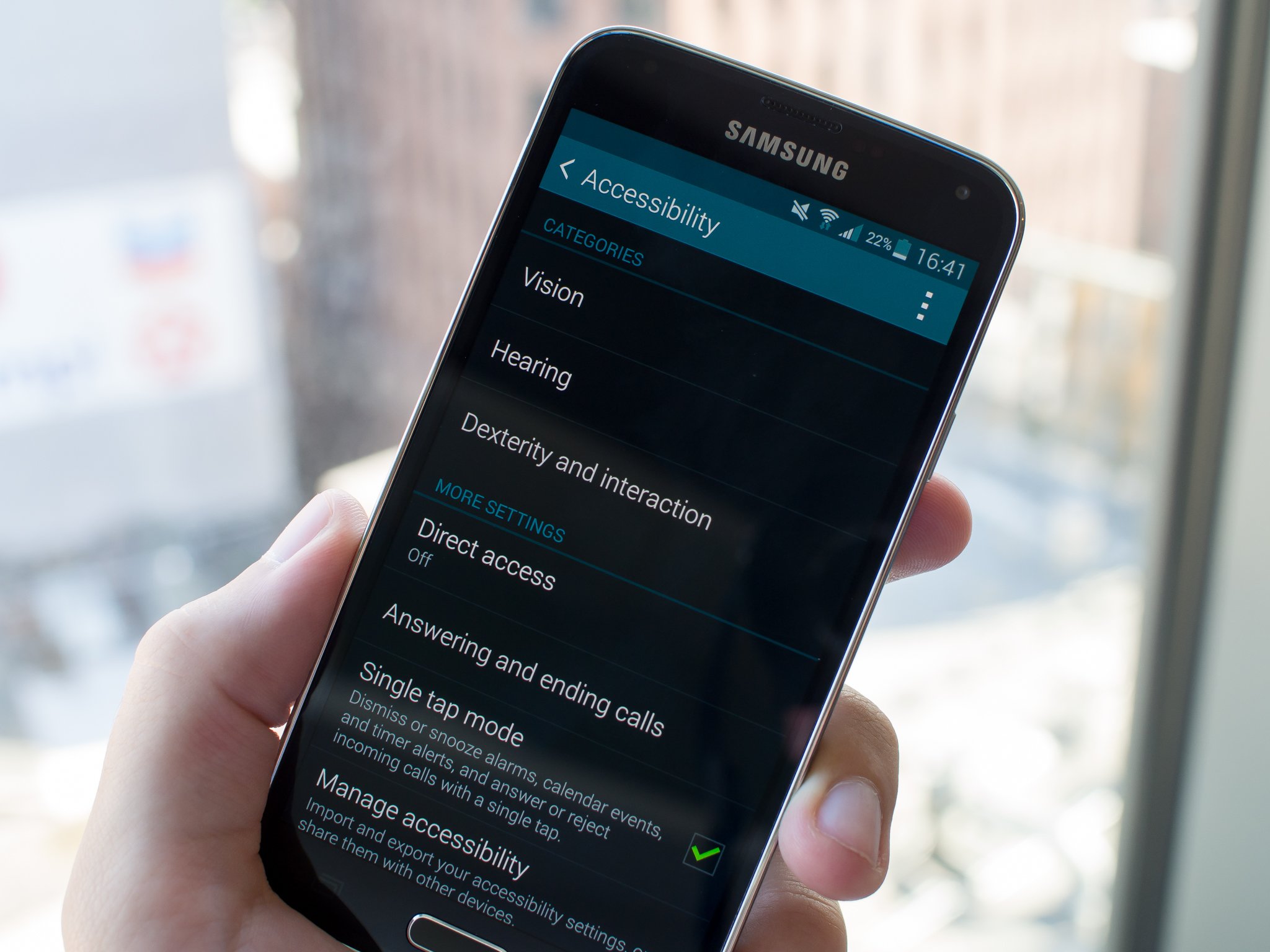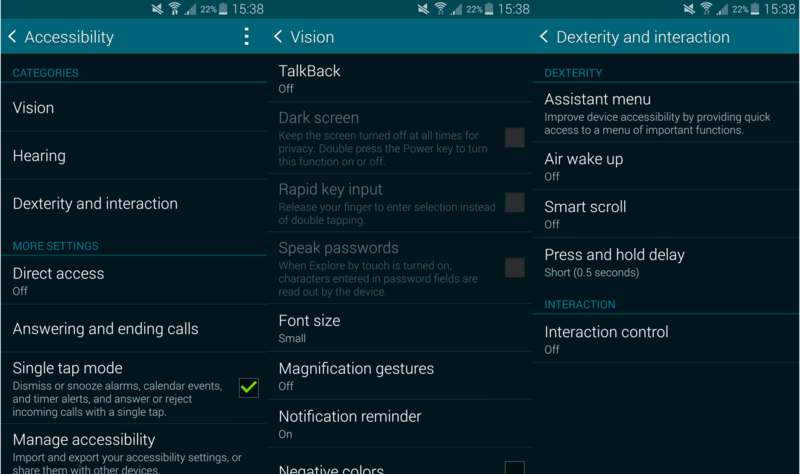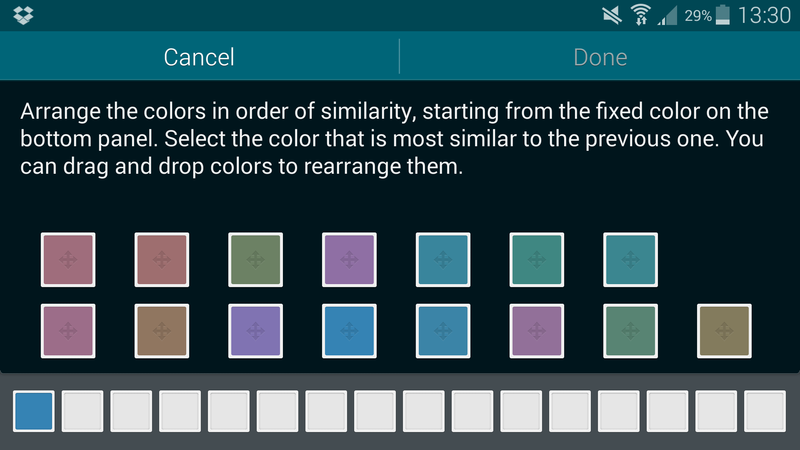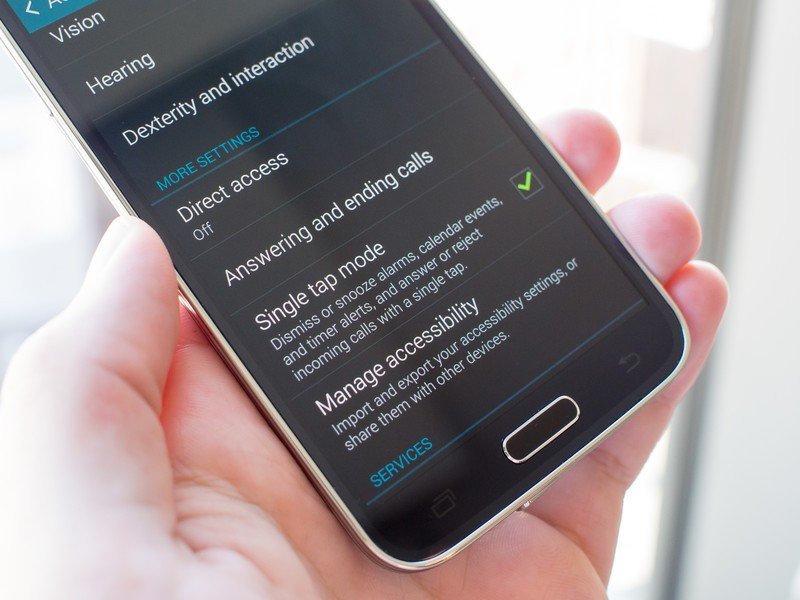Accessibility features on the Samsung Galaxy S5

Accessibility features may not be important to the vast majority of users out there, but for those who need them, these tweaks deep in the settings can be a make-or-break features for whether a new Android phone will work for them on a daily basis. It's the inclusion of accessibility settings in these phones that allows Android to have such an amazing reach, and we want to highlight where they are and what they do.
We've been looking at the differences in accessibility features across various popular devices, and now it's time to dive through the Galaxy S5's options and see how they differ from others out there.

Samsung takes the accessibility options available in stock Android and improves on them immensely. We plan on highlighting all of Samsung's unique accessibility features here, but for the features that do overlap with what Google's done out of the box, we'll refer you over to our guide on the basic accessibility settings in Android.
We've grouped the rest of the settings into the subheadings that they appear under on the Galaxy S5. Ones that are simply one-tap on/off options have been omitted, but anything that requires explanation is included. Hopefully if you're someone who needs these settings, this guide can help you out.
Vision
- Font size: Pretty self-explanatory here. You can adjust the font size between tiny, huge and five different levels in between. You may see some issues with different apps, but for the most part the text should redraw and format properly.
- Notification reminder: When enabled, the phone will beep at a given interval if you have a notification waiting for you. The interval can be selected to be three, five, 10, 30 or 60 minutes. This will of course be useful for those who have trouble turning the phone on regularly, or have poor eyesight.
- Negative colors: Similar to other phones that offer an "inverted" mode, the "Negative colors" option on the Galaxy S5 changes the entire interface to a color palette that's easier to see for those with vision issues. The interface switches to be primarily white, with black text and red or pink interface elements.
- Color adjustment: If you have trouble seeing elements of the interface, but find the "Negative colors" option to go too far, you can choose to use "Color adjustment" instead. When enabled, you'll be given an interface to align colors by order of shade and color to what you see as accurate. After completing the setup process, the interface will change colors subtly to reflect how you see the colors displayed on the phone.

- Accessibility shortcut: When enabled, the phone will make it easier to turn on TalkBack without having to dive through the settings. After turning it on, you can long-press the power button, then place two fingers on the screen for a few seconds to turn on TalkBack. From that point forward, everything you do will be spoken aloud by the phone so that you can navigate the interface.
Hearing
- Flash notification: If the standard notification light isn't powerful enough, you can choose to also have the camera flash light up when a new notification comes in. (This one may actually be useful for more than just hearing-impaired users, though.)
- Samsung/Google subtitles (CC): Samsung and Google both offer subtitles (closed captioning), and you can choose which one you want to have enabled for videos where supported. If you choose to turn on subtitles, you can also tweak the font color and size in the settings.
- Sound balance and Mono audio: Both of these options together can improve the audio experience for those hard of hearing. When choosing audio balance you can select to put more of the audio volume through the left or right channel so that it comes out evenly to you. You can also enable mono audio so that it uses just a single channel, if that's something that helps.
- Baby crying detector: Not your typical accessibility option, the "Baby crying detector" option turns your Galaxy S5 into a very expensive baby monitor. Once enabled, you are supposed to place your phone within three feet of your child and let it listen for crying. If the phone detects that the child is crying, your connected Gear smartwatch from Samsung will let you know. Not the most useful feature ever, but it's there!
- Auto haptic: When enabled, the phone will vibrate to follow along with music or sound being played. This isn't supported in every third-party app.
Dexterity and interaction
Be an expert in 5 minutes
Get the latest news from Android Central, your trusted companion in the world of Android
- Assistant menu: This feature gives you an on-screen interface to control your phone in ways normally reserved to using combinations of hardware buttons. The menu consists of a persistent square button on the left or right side (you choose) of the phone interface that when tapped expands to give you a grid of four icons. With a single tap you can navigate home and back, open the notification shade, take screenshots, change the volume, lock the screen and more. When you dive further into the settings, you can adjust how the button looks and whether to enable contextual menu items for some apps. (While this feature is targeted at users who have trouble pressing physical buttons, it may also be worth turning on if you have a broken button on your device.)
- Air wake up: When your phone is turned off and on a flat surface, you can wave your hand over it to turn the screen on rather than hitting the power or home buttons.
- Smart scroll: If you are unable to scroll through items using your thumb or finger, use "Smart scroll" to either tilt your head or phone to scroll through content. you have your choice of which method to use, and can change the scroll speed to fit your reading speed.
- Interaction control: This is a relatively complex feature but one that can be incredibly useful. When enabled, you can press and hold the power and volume down buttons to reveal an interface that blocks interaction with certain parts of the screen. You can select particular areas with a tool, draw around small areas, or choose to block the entire screen. This can be incredibly useful for those who don't intend to use the touchscreen as the primary interface method.
More settings
- Direct access: This feature lets you quickly get to accessibility options by pressing your home button quickly three times. When turning on "Direct access," you choose which settings — accessibility, TalkBack, Negative Colors, Interaction control — will be quickly accessible when launching from the home button.
- Answering and ending calls: This grouping of settings helps you answer and end calls in more than just the traditional "swipe" way. You can enable answering calls by pressing the home button, with voice commands, and by waving your hand over the device. You can also choose to end calls by pressing the power button.
- Manage accessibility: Once you've got your treasure trove of accessibility options set up just the way you want them, you'll want to use this area to export your accessibility settings file. When exporting, a file of all of your current settings will be saved to your phone in an "Accessibility" folder where you can then recall it later or save it to another device and import it to restore your settings.
Take your time setting these up

If you end up needing to rely on these accessibility settings, be sure to take plenty of time to familiarize yourself with them and set everything up the right way. Making proper use of these features can make a world of difference when it comes to usability of your Galaxy S5. If you're fortunate enough to not need any of these features but know someone who does, consider helping them get things set up using this guide.
Andrew was an Executive Editor, U.S. at Android Central between 2012 and 2020.

